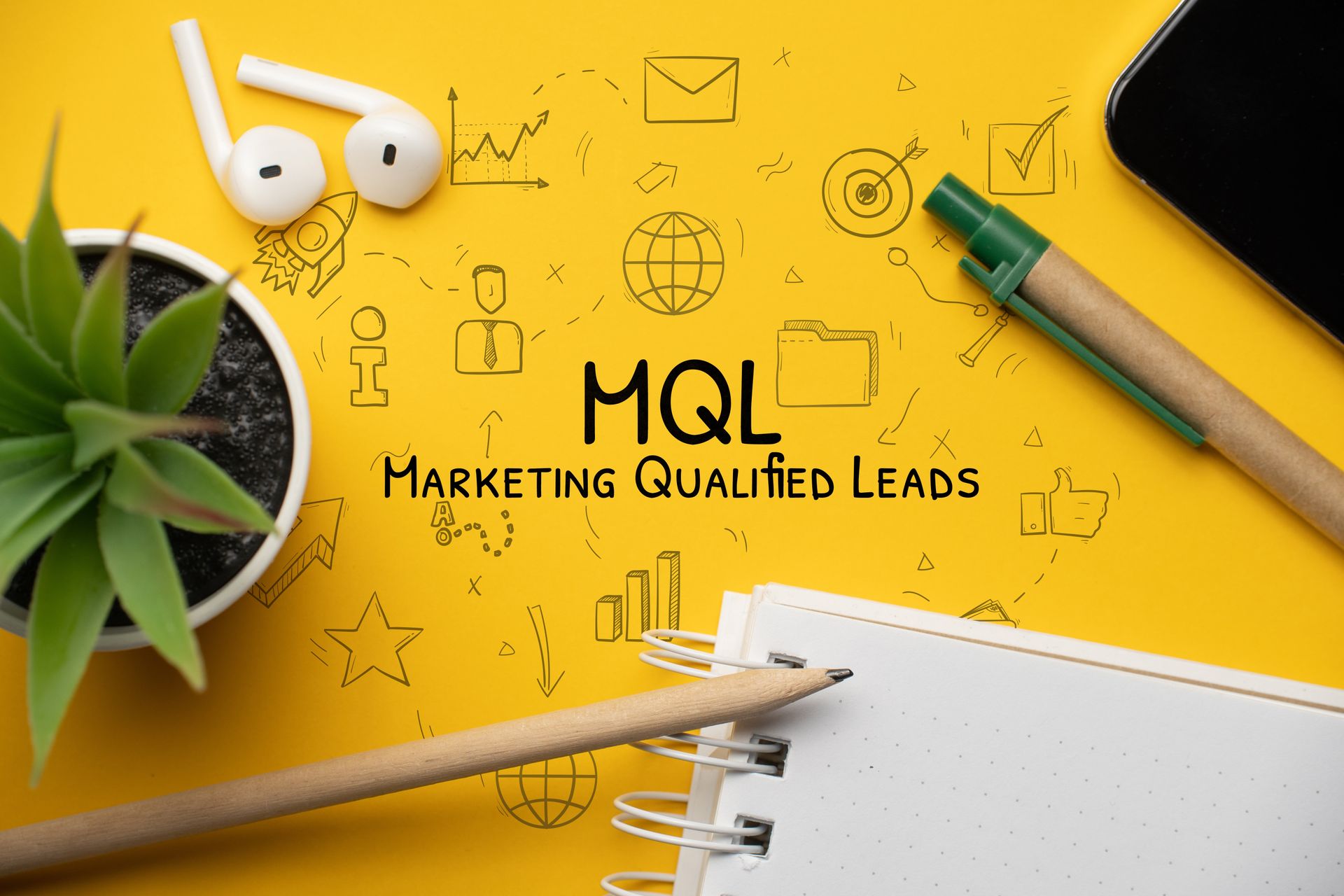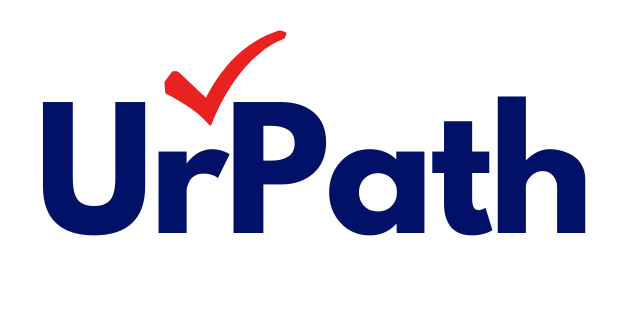Blog Layout
Building a Strong MQL Model: The Foundation of Effective Marketing
Hayoung Kim • October 24, 2024
Book Your Free Initial Consultation Today
Why Building a Strong MQL Model Matters

Introduction to MQLs: Why They Matter
A Marketing Qualified Lead (MQL) is a prospective customer who has shown interest in a product or service and meets specific criteria, indicating a higher likelihood of conversion. MQLs play a crucial role in aligning marketing and sales efforts, ensuring that sales teams focus on leads with the highest potential. A well-developed MQL model optimizes the sales funnel, driving efficiency and boosting the return on investment (ROI) for marketing campaigns.
Why Building a Strong MQL Model Matters
Building a strong foundation for an MQL model is not just about improving marketing metrics—it's about fundamentally transforming how an organization approaches lead generation and conversion. Here’s why it’s critical:
1. Aligning Marketing and Sales for Unified Goals
A well-defined MQL model ensures that marketing and sales teams work toward shared objectives. It eliminates the common friction between these departments by providing clarity on what constitutes a high-quality lead. This alignment is crucial because it means that marketing focuses on generating leads that meet specific criteria, while sales can trust that the leads passed to them have a genuine potential for conversion. When marketing and sales are on the same page, it fosters a smoother handoff process, improving the overall efficiency of the sales funnel and helping the organization hit revenue targets more consistently.
2. Maximizing Resource Efficiency
With a strong MQL model, organizations can allocate resources more effectively. Marketing efforts become laser-focused on campaigns and content that attract the right leads, minimizing wasted spend on efforts that do not convert. Similarly, sales teams save time by concentrating on leads with the highest conversion potential. This targeted approach reduces the time and cost associated with nurturing unqualified leads, allowing both teams to invest their efforts where they can drive the most value. The result is a more streamlined sales process that converts leads faster, reducing the overall cost per acquisition.
3. Improving Lead Quality and Predictability
A robust MQL model introduces predictability into the lead generation process, helping the organization understand which leads are likely to convert. By clearly defining the criteria that determine an MQL, the model allows organizations to standardize their approach to lead qualification. This standardization ensures a consistent flow of high-quality leads into the sales pipeline, reducing variability and uncertainty in sales forecasting. With a predictable pipeline, organizations can make more informed decisions about resource allocation, budgeting, and growth strategies.
4. Enhancing Customer Experience and Engagement
The strength of an MQL model also directly impacts the customer experience. By focusing on leads that align closely with the organization’s ideal customer profile (ICP), marketing teams can deliver highly personalized content and messaging. This tailored approach makes prospects feel understood and valued, increasing their likelihood of engaging further. Moreover, when leads are qualified effectively, sales teams can have more relevant and timely conversations with potential customers, addressing their specific needs and challenges. A smooth transition from marketing to sales results in a positive customer experience, enhancing the organization’s reputation and fostering long-term relationships.
5. Driving Higher ROI for Marketing Campaigns
One of the most tangible benefits of a well-established MQL model is the boost it provides to marketing ROI. When marketing teams use a model that clearly identifies high-potential leads, they can refine their campaigns to target the audiences that matter most. This precision reduces ad spend on less likely prospects and improves conversion rates from marketing efforts. As the quality of MQLs improves, the sales team’s conversion rates increase, leading to a shorter sales cycle and faster revenue generation. In a competitive market, this ability to convert leads more efficiently can be a key differentiator, setting the organization apart from competitors.
6. Adaptability to Market Changes
A strong MQL model provides a foundation for flexibility in response to market shifts. As customer behavior changes or new competitors emerge, the model can be adjusted to prioritize different types of leads or modify scoring criteria. This adaptability ensures that the organization remains agile and responsive, adjusting its strategy as needed to stay ahead of industry trends. By regularly refining the MQL model, organizations can maintain a competitive edge and ensure that their marketing and sales efforts continue to resonate with the evolving needs of their target audience.
My Experience: The Impact of a Strong MQL Model
Throughout my career, I've had the chance to see both sides of the lead scoring equation. In conversations with organizations that lacked a strong lead scoring system, I often heard about their struggles with managing potential leads. They had so many “low-hanging fruits”—prospects that were interested but not quite ready for sales—that just sat in their CRM without a clear path forward. The lack of a proper scoring model meant that these opportunities never turned into MQLs, and the sales team didn’t know when to engage with them. As a result, valuable leads were left untapped, creating frustration among the team members.
On the other hand, I’ve worked with organizations that had a well-structured lead scoring model, and the difference was night and day. These organizations knew exactly how to measure lead engagement and when to qualify a lead as an MQL. Their CRM systems automatically flagged when a lead was ready for the sales team, making the handoff seamless. This approach not only helped them convert more leads into customers but also made a significant impact on their revenue. It created a sense of motivation and clarity for both marketing and sales teams, as they could see the tangible results of their efforts and work toward common goals. The combination of a strong lead scoring system and clear processes became a powerful driver of their success.
Key Steps in Developing an MQL Model
Define Ideal Customer Profiles (ICP): Before creating an MQL model, it’s vital to define the ICP—customers who derive the most value from your products or services. This process involves understanding their demographics, firmographics (like industry, organization size, and location), pain points, and buying behavior. A clear ICP helps tailor marketing campaigns and set precise criteria for MQLs, ensuring alignment with sales goals.
A. Establish Criteria for MQLs
An effective MQL model relies on a blend of explicit (demographic) and implicit (behavioral) criteria, with each element shaped by the expertise of different teams:
- Explicit Criteria: Data like job title, organization size, industry, and location help identify prospects who fit the Ideal Customer Profile (ICP). The Product Marketing Managers (PMMs) and Marketing Operations (MOPs) team collaborate to define these criteria. PMMs bring insights about the target market and customer segments, while the MOPs team ensures that the criteria are properly integrated into the lead scoring model within the CRM system.
- Implicit Criteria: Behavioral indicators, such as website visits, content downloads, webinar attendance, and email engagement, reveal the level of interest and readiness to engage further. The Demand Generation team works closely with the MOPs team to identify which behaviors most accurately indicate a lead’s readiness to convert. The Demand Generation team provides feedback based on campaign performance, while the MOPs team adjusts the scoring model to ensure that the behaviors contributing to MQL status are effectively tracked and scored.
Together, these teams ensure that both explicit and implicit criteria are well-defined, accurately reflecting the characteristics and behaviors of leads most likely to become customers. This alignment helps create a more targeted and effective MQL model, optimizing the flow of high-quality leads to the sales team.
B. Build a Lead Scoring Model with Collaborative Efforts:
The lead scoring model is crucial for identifying when a lead becomes a Marketing Qualified Lead (MQL). This process is led by the Marketing Operations (MOPs) team, working closely with the Demand Generation team and Product Marketing Managers (PMMs) to ensure precise qualification criteria and seamless integration into the company’s sales process:
- MOPs Team: The MOPs team is responsible for designing the scoring model's logic. They determine how different lead behaviors and attributes (like job title, industry, and content engagement) should be scored and weighted. They integrate this scoring system into CRM and automation platforms to ensure that data is accurately tracked and scored. By setting clear scoring thresholds, the MOPs team establishes when a lead’s behavior indicates readiness to become an MQL, ensuring that only qualified leads are passed on to sales.
- Demand Generation Team: This team plays a key role in providing the data needed to refine the scoring model. They work to understand which engagement actions—such as downloading specific content or attending a webinar—most accurately predict a lead’s readiness to become an MQL. They collaborate with MOPs to ensure these actions are appropriately weighted in the scoring system. The Demand Generation team also provides ongoing feedback to refine the scoring thresholds, ensuring that the model adapts to real-world campaign performance and lead behavior patterns.
- Product Marketing Managers (PMMs): PMMs contribute by defining the characteristics of the ideal customer profile (ICP), helping to ensure that the scoring model aligns with the target audience. They provide insights into which messaging resonates with different lead segments and advise on how to score engagement with specific types of content or product-related information. This ensures that the scoring model prioritizes leads that are a strategic fit for the business, guiding them into the MQL category when their behaviors match the company’s ideal profile.
Together, these teams create a robust lead scoring model that accurately identifies high-potential leads, ensuring that sales focuses on prospects with the greatest likelihood of conversion. This collaborative effort allows the model to remain agile and responsive to evolving market needs, continuously improving the quality and predictability of MQLs.
C. Integrate Technology for Tracking and Analysis:
Using CRM and marketing automation tools like HubSpot, Salesforce, and/or Marketo, marketing teams can track interactions and automate the lead qualification process. These platforms ensure seamless communication between marketing and sales by automatically updating scores as leads interact with content, making the transition from MQL to SQL (Sales Qualified Lead) smoother. An SQL is a lead that has been vetted by the sales team, indicating that they are ready for direct engagement and have a higher potential to convert into a customer. Future blog posts will dive into the rest of the funnel and the importance of SLAs (Service Level Agreements), so stay tuned!"
D. Continual Refinement of the MQL Model:
A successful MQL model is not static; it evolves with changing market conditions, shifting customer behaviors, and ongoing feedback from the sales team. As market dynamics shift— whether due to new competitors, changes in buyer preferences, or economic factors—it's crucial that the MQL model adapts to stay relevant. Regular reviews of lead conversion rates and close collaboration between the Marketing Operations (MOPs) team and the Demand Generation team ensure that the criteria for scoring and qualifying leads are always in tune with current realities.
Why Continuous Improvement Keeps You Ahead:
- Adapting to Market Changes: The business landscape is constantly shifting. Buyers’ needs change, new competitors emerge, and digital trends evolve. By regularly refining your MQL model, you can adjust scoring criteria to reflect what matters most in the present moment. For example, if a particular type of content or engagement suddenly becomes more indicative of conversion, adjusting the scoring model ensures that these signals are weighted appropriately. This adaptability means that your MQL model always reflects the most up-to-date understanding of what drives interest and engagement, allowing you to stay competitive.
- Responding to Sales Feedback: Sales teams are on the front lines, engaging directly with prospects and customers. Their feedback is invaluable in understanding which leads are converting and why. By incorporating sales insights into the MQL model, the marketing team can fine-tune criteria that better match real-world outcomes. For instance, if sales reports that certain behaviors (like repeat visits to the pricing page) are strong predictors of conversion, the MOPs team can adjust the scoring accordingly. This feedback loop ensures that the leads passed to sales are of higher quality, increasing close rates and reducing wasted effort on unqualified leads.
- Optimizing Campaign Performance: As marketing campaigns unfold, analyzing the data generated by these efforts helps refine the MQL model further. The Demand Generation team can identify which campaign elements are driving the most engagement and adjust tactics accordingly. If a particular webinar or content piece drives a high volume of MQLs, the scoring model can be updated to reflect the value of that engagement. This continual optimization allows the marketing team to focus resources on strategies that deliver the best results, improving ROI over time.
- Staying Ahead of Competitors: Continuous improvement isn’t just about keeping up—it’s about staying ahead. A constantly refined MQL model gives companies a competitive edge by ensuring that they are always targeting and engaging the right prospects. As other companies struggle to adjust to shifts in buyer behavior or market trends, those with a proactive approach to refining their MQL models will consistently attract and convert more high-quality leads. This foresight positions your business as a leader in the market, capable of seizing new opportunities before competitors catch up.
- Enhancing Predictability and Planning: Regular refinement of the MQL model also enhances the predictability of lead flow and conversion rates. This helps businesses plan more effectively, making data-driven decisions about resource allocation, budgeting, and scaling efforts. With a refined model, companies can confidently predict how many MQLs they will generate from specific campaigns and adjust their strategies accordingly. This level of predictability is essential for long-term planning and achieving sustainable growth.
The Bottom Line:
Continuous improvement is the lifeline of a successful MQL model. By keeping the model aligned with real-time data, sales feedback, and evolving market needs, businesses can ensure that their lead qualification process remains precise, targeted, and effective. This iterative approach not only keeps marketing efforts relevant but also empowers sales teams to close more deals, ultimately driving revenue growth and sustaining a competitive advantage in the marketplace.
Conclusion:
A strong MQL model is more than just a tool—it's a strategic framework that aligns marketing and sales, enhances efficiency, and drives revenue growth. My experience has shown that organizations that invest in a robust MQL model not only convert more leads but also build a culture of collaboration and shared success. By investing in a well-defined model, organizations can ensure that their marketing efforts are not only targeted and effective but also adaptive to change. This foundational approach is essential for long-term success, allowing organizations to stay competitive, deliver exceptional customer experiences, and achieve sustainable growth.
Contact Us to Elevate Your Marketing Strategy
Is your marketing team looking to improve its lead-to-MQL scoring model, attract higher-quality leads, or boost demand generation efforts? At UrPath, we understand the challenges of optimizing your MQL process and the importance of a data-driven approach to lead scoring and alignment. Let’s discuss your organization’s unique goals and how we can support your marketing efforts to drive growth.
Reach out to us at info@urpath.org
or fill out the form below to explore how we can help your team enhance its lead generation strategy and achieve better results. Let’s work together to take your marketing to the next level.
Got Any Questions?

By Hayoung Kim
•
November 14, 2024
Unlock the full potential of webinars as a versatile tool in your B2B marketing strategy. From showcasing your product to launching and discussing new eBooks or whitepapers, sharing thought leadership insights, and highlighting customer success stories, webinars offer endless opportunities. Whether you’re looking to drive brand awareness, engage your target audience, or generate qualified leads, this step-by-step guide—based on my extensive experience—will help you create impactful and effective webinars that deliver results.

By Stephanie Wu
•
November 7, 2024
A successful omnichannel strategy requires careful planning and continuous optimization. Here are the key steps: 1. Evaluate and Define Goals Start by setting clear objectives that align with the institution's overarching goals, such as increasing inquiries, boosting application numbers, or driving enrollments. From my experience working at Google’s Growth Lab, I learned the importance of identifying a North Star Metric— a single, most critical indicator that best represents the success of the product or offering. Establish supporting KPIs to track performance along the way, ensuring that all activities contribute to the North Star Metric. Setting quarterly OKRs (Objectives and Key Results) and measuring progress against them provides a focused direction for the strategy and enables continuous alignment with institutional objectives. 2. Conduct Market and Competitor Research To build a truly effective omnichannel strategy, it’s essential to conduct thorough market and competitor research that goes beyond examining similarly ranked institutions. Start by evaluating competitor strategies and analyzing student expectations to identify unique opportunities and differentiators. Competitor research should be approached holistically—your competitors are not only institutions with a similar ranking or academic focus but also those offering unique engagement strategies or programs that attract your target demographics, even if their core offerings differ. Look closely at the marketing channels, messaging, and engagement tactics other institutions are using, whether they share your academic profile or not. For example, a specialized art school might learn valuable lessons from the digital engagement strategies of a large research university, or a liberal arts college might find innovative recruitment approaches from vocational schools. This broader perspective on competitors helps reveal gaps, new trends, and untapped channels that can be adapted to fit your institution’s goals. By understanding what others are doing and refining your strategy based on these insights, you can better position your institution to stand out and capture the attention of prospective students. 3. Select the Right Channels As emphasized earlier, use data-driven insights to identify the most effective channels for reaching specific student segments, optimizing both engagement and ROI. By analyzing data on student preferences and behaviors, institutions can make informed decisions on where to invest marketing resources for maximum impact. For example, prospective undergraduate students often engage more with visually rich, interactive platforms like Instagram, TikTok, and YouTube, which allow for immersive storytelling. In contrast, graduate or executive education students may be more responsive to LinkedIn and email campaigns, where professional content, career outcomes, and academic rigor are emphasized. Selecting the right channels involves continually assessing which platforms generate the highest engagement and conversion rates among target audiences. Analyzing metrics such as click-through rates, time spent on content, and conversion paths across channels enables institutions to prioritize investments in high-performing platforms. This approach ensures each marketing dollar is allocated to channels that align best with each segment’s preferences, ultimately driving stronger engagement, more completed applications, and a higher return on investment. 4. Invest in Technology and Training Providing recruitment teams with advanced tools and proper training is crucial for a streamlined and effective recruitment process. Start by equipping them with CRM systems to manage relationships and track interactions with prospective students. These systems allow recruitment teams to capture valuable data, follow up efficiently, and maintain personalized communication with leads throughout their journey. Analytics platforms are another essential investment, offering insights into the effectiveness of campaigns, understanding student behaviors, and identifying the best channels for outreach. With data-driven insights, recruitment teams can make informed decisions, targeting the right students and optimizing their strategies over time. Marketing automation tools further enhance efficiency by automating repetitive tasks, such as sending emails, segmenting leads, and scheduling follow-ups. This frees up time for recruitment teams to focus on personalized outreach and engagement strategies that build stronger connections with prospective students. Equally important is training staff to use these technologies effectively. Ensuring they understand how to leverage each tool to its fullest potential will lead to seamless execution of campaigns, better data management, and ultimately, higher conversion rates. When teams are both well-equipped and well-trained, they can work more efficiently and effectively, enhancing the overall success of recruitment efforts. 5. Continuously Optimize To maximize the effectiveness of recruitment efforts, it’s essential to regularly evaluate and adjust campaign performance across all channels. Continuous optimization involves analyzing data from each channel—whether it’s email marketing, social media, search ads, or events—to understand what’s working and what isn’t. By regularly assessing metrics like engagement rates, conversion rates, and cost-per-lead, recruitment teams can identify trends, pinpoint areas for improvement, and make data-driven decisions. This iterative process is crucial for refining the messaging, channel selection, and targeting to ensure every interaction resonates with the intended audience. For example, if data shows that certain messages resonate more on social media than email, teams can adjust their approach by focusing on that channel for similar campaigns. Likewise, if one segment of the audience responds well to specific content, such as testimonials or career outcome data, this can guide future content strategies. Continuous optimization is especially critical for improving ROI and ensuring efficient use of the marketing budget. By analyzing which channels yield the best results for the lowest cost, recruitment teams can allocate more resources to high-performing channels while reducing spend on those that aren’t delivering. This approach prevents wasting marketing dollars on ineffective channels and strategies, instead focusing on areas that maximize return. Ultimately, continuous optimization ensures the omnichannel strategy remains relevant and aligned with evolving student behaviors, enabling the recruitment team to consistently reach their goals while maintaining a strong ROI. This disciplined approach not only keeps campaigns efficient but also sustains engagement, strengthens connections with prospective students, and maximizes the value of every marketing dollar spent.
CONTACT US
info@urpath.org
68 Harrison Ave
Ste 605 PMB #991996
Boston, MA, 02111
+1 (508) 283-8699
ABOUT
SERVICES
JOIN OUR NEWSLETTER
Contact Us
Thank you for signing up to receive our newsletter. You will receive it when we have announcements to make!
Oops, there was an error sending your message.
Please try again later.
Please try again later.

© 2025
All Rights Reserved | UrPath LLC

